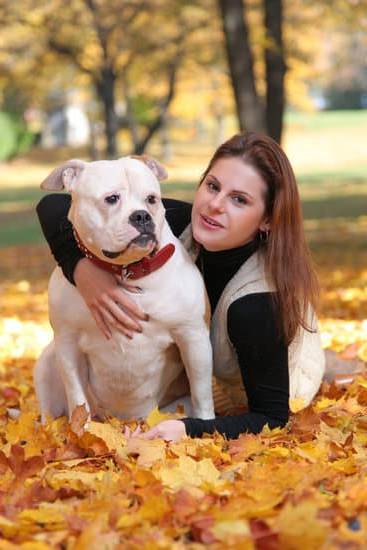Are you wondering how to potty train your dog with bells? Potty training with bells is a popular and effective method for teaching your furry friend to alert you when they need to go outside to use the bathroom.
In this article, we will cover everything you need to know about potty training with bells, including understanding the concept, choosing the right type of bells, introducing the bells to your dog, training them to use the bells for potty breaks, troubleshooting common issues, and providing tips for successful potty training. By the end of this article, you will have all the information you need to successfully train your dog using this method.
Potty training with bells involves teaching your dog to communicate their need to go outside by ringing a set of bells hanging from the door handle. This method is based on positive reinforcement and can be a game-changer in effectively communicating with your pet. By understanding the concept behind bell potty training and following the proper steps, you can easily teach your dog this helpful skill.
When it comes to bell potty training, choosing the right type of bells is crucial. There are various types of bell sets available in the market designed specifically for this purpose. It’s essential to select a set that is durable and easy for your dog to use. Once you have chosen the right set of bells, it’s time to introduce them to your dog and start the training process.
Stay tuned as we explore each step in-depth and provide valuable tips for successful potty training with bells. Whether you’re a new pet parent or looking for alternative potty training methods, bell training might be just what you need to make life easier for both you and your furry companion.
Understanding the Concept of Potty Training With Bells
Potty training a dog with bells is a simple and effective way to teach your furry friend to communicate when they need to go outside. By using bells, you can give your dog the ability to alert you when they need to relieve themselves, which can be especially helpful for puppies or newly adopted dogs. Understanding the concept of potty training with bells is crucial for successfully implementing this method.
When it comes to potty training with bells, the concept is quite straightforward. You will hang a set of bells on the door that you use to take your dog outside for potty breaks. Every time before taking your dog out, you will encourage them to ring the bells with their nose or paw. This action creates an association between ringing the bells and going outside for bathroom breaks.
To effectively grasp this concept, it’s important to remember that consistency is key. Dogs thrive on routine, so ensuring that every time your dog needs to go out, they are encouraged to use the bells will help reinforce this behavior over time. With patience and positive reinforcement, most dogs can learn how to potty train with bells in just a few weeks.
To get started with understanding this concept further, here are some key points:
- Consistency and repetition are crucial in teaching your dog the concept of using bells for potty breaks.
- Positive reinforcement, such as treats and praise, can help motivate your dog to use the bells consistently.
- Understanding your dog’s body language and cues for needing a bathroom break will also play a significant role in successful bell potty training.
By familiarizing yourself with these concepts and implementing them into your training routine, you can effectively teach your dog how to communicate their bathroom needs using bells.
Choosing the Right Type of Bells for Your Dog
When it comes to potty training your dog with bells, choosing the right type of bells is crucial for the success of this method. The bells should be easy for your dog to reach and use, but also durable enough to withstand daily wear and tear. There are several types of bells available in the market specifically designed for this purpose, including jingle bells, sleigh bells, and doorbell-style bells.
Jingle bells are a popular choice for potty training dogs as they produce a distinctive sound that is easy to associate with the need to go outside. They are often made of metal or plastic and come in various sizes and designs.
Sleigh bells are another option that can be attached to a strap or hanger near the door. These bells have a classic ringing sound that can be easily heard throughout the house when your dog nudges them with their nose or paw.
Doorbell-style bells are specifically designed for pet training purposes and are usually set up near the exit door. They can be easily activated by your dog using their nose or paw, producing a clear chime that signals their need to go outside. Whichever type of bell you choose, make sure it is audible enough for both you and your dog to hear when it’s time for a potty break.
In addition to the type of bell, consider the material and size when selecting one for your dog. A small dog may require smaller or lighter bells, whereas larger dogs may need sturdier options that can withstand more forceful use.
Ultimately, choosing the right type of bell depends on your dog’s size, behavior, and how they respond to different sounds. Once you have chosen the perfect set of bells for your furry friend, it’s time to introduce them to your pup and begin the training process on how to potty train a dog with bells.
| Type of Bell | Description |
|---|---|
| Jingle Bells | Easy-to-use and produce a distinctive sound |
| Sleigh Bells | Classic ringing sound; attached to strap or hanger near door |
| Doorbell-style Bells | Specifically designed for pet training; produced clear chime when activated by dog. |
Introducing the Bells to Your Dog
Understanding the Purpose
Before introducing the bells to your dog, it’s important to understand the purpose behind using them for potty training. The concept of using bells is to provide a clear, consistent signal that your dog can use to indicate when they need to go outside. This helps them associate a specific action (ringing the bell) with the desired behavior (going outside to potty).
Choosing the Right Location
When introducing the bells to your dog, consider where you want to hang them. It’s best to choose a location that is easily accessible and noticeable for your dog. This could be on the doorknob of the door that leads outside or on a hook near the door. The key is to make sure the bells are within reach for your dog and in a spot where they will see them regularly.
Initial Introduction
To introduce the bells to your dog, start by simply hanging them in their designated location without any instructions. Allow your dog to investigate and become familiar with the new addition without any pressure or expectations. You may notice that they are curious about the bells and may even sniff or paw at them.
As part of bell potty training, you’ll need patience and consistency as you introduce this new tool into your dog’s routine.
After following these steps prepare yourself for some amazing results once – with patience, dedication, and appropriate training – using this method successfully.
Training Your Dog to Use the Bells for Potty Breaks
Training your dog to use bells for potty breaks can be a game-changer in the potty training process. It provides a clear and effective way for your dog to communicate their need to go outside, ultimately reducing accidents in the house. Here’s how to successfully train your dog to use the bells for potty breaks.
First, you’ll need to hang the bells on the door that you typically use to take your dog outside. Make sure they are within reach for your dog, whether they nudge them with their nose or paw at them. You can choose from various types of bells, including sleigh bells, jingle bells, or special potty training bells designed specifically for this purpose.
To introduce the bells to your dog, start by getting their attention with a treat and then encouraging them to interact with the bells. You can gently tap the bells with your hand or put a treat on top of them so that your dog makes contact with the bells while reaching for the treat. Positive reinforcement is key during this phase of training – every time your dog interacts with the bells, praise and reward them.
Once your dog understands that touching or ringing the bell is associated with going outside, it’s time to transition into using the bell for potty breaks. Whenever you take your dog out for a bathroom break, encourage them to ring the bell first. Over time, they will learn to associate ringing the bell with going outside and will start doing so unprompted when they need to relieve themselves.
| Aspect | Action |
|---|---|
| Bell Placement | Hang the bells on the door |
| Bell Introduction | Encourage interaction with treats |
| Transitioning Phase | Encourage bell ringing before potty breaks |
Troubleshooting Common Issues During Bell Potty Training
Potty training a dog using bells can be a great way to communicate with your furry friend and teach them to signal when they need to go outside. However, there can be some common issues that arise during the training process. Here are some tips for troubleshooting these issues:
1. Bell Anxiety: Some dogs may feel anxious or scared of the bells at first. To help alleviate this anxiety, you can try using softer or quieter bells initially. Additionally, you can use positive reinforcement techniques such as treats and praise when your dog interacts with the bells.
2. Accidental Ringing: Sometimes dogs may accidentally ring the bells, leading to false alarms for potty breaks. To address this issue, you can temporarily remove the bells when you’re unable to supervise your dog, such as during nighttime or when you’re away from home.
3. Inconsistency in Bell Usage: If your dog is inconsistently using the bells to signal potty breaks, it’s important to revisit the training process. Ensure that you’re consistently reinforcing the behavior with rewards and paying attention to your dog’s signals.
By troubleshooting these common issues, you can set your dog up for success in using bells for potty training.
Additional Tips:
Tips for Successful Potty Training With Bells
Potty training a dog with the use of bells can be a highly effective method for teaching your furry friend when to go outside. It’s important to keep in mind that successful potty training with bells requires consistency, patience, and positive reinforcement. Here are some tips for ensuring that your dog becomes proficient at using the bells for potty breaks.
Consistency Is Key
Consistency is crucial when it comes to potty training with bells. Make sure that every time you take your dog outside for a potty break, you encourage them to ring the bell before going out. Additionally, ensure that everyone in the household follows the same routine and reinforces the use of the bells consistently.
Positive Reinforcement
When your dog successfully uses the bells to indicate that they need to go outside, make sure to praise and reward them. This positive reinforcement will help them understand that ringing the bells leads to something positive – such as a trip outside or a tasty treat. Avoid punishment for accidents inside, as this could lead to confusion and anxiety in your pet.
Be Patient
Remember that learning to use the bells for potty breaks may take time and patience. Some dogs might pick up on this skill quickly, while others may require more time and practice. Stay patient and continue to offer encouragement and rewards as your dog makes progress.
By following these tips and staying dedicated to the process, you can effectively teach your dog how to potty train with bells. With consistent training methods, positive reinforcement, and plenty of patience, you’ll soon find that your furry companion is able to communicate their need for a potty break by simply ringing the bell.
Final Thoughts and Additional Resources for Bell Potty Training Success
In conclusion, potty training your dog with bells can be an effective and convenient way to communicate with your furry friend when they need to go outside. By following the steps outlined in this article, you can teach your dog how to use the bells to signal their need for a potty break. It’s important to be patient and consistent in the training process, as every dog learns at their own pace.
One of the key aspects of successfully potty training with bells is understanding your dog’s behavior and communication cues. By paying attention to your dog’s body language and pairing it with the bell training, you can create a strong association between the sound of the bells and the act of going outside to eliminate. This can lead to a smoother transition for your dog and less stressful potty breaks for both of you.
Remember that training takes time and effort, so don’t get discouraged if your dog doesn’t immediately grasp the concept of using the bells. With patience, positive reinforcement, and consistency, you can help your dog learn how to potty train with bells effectively.
For more information and tips on bell potty training success, there are additional resources available online and through professional trainers that can provide further guidance on this method. With dedication and commitment, you can successfully teach your dog how to use bells for potty breaks.
Frequently Asked Questions
Do Bells Help Potty Train a Dog?
Bells can be a helpful tool in potty training a dog. By teaching them to ring a bell when they need to go outside, it creates an audible signal for the owner to act on, which can aid in reinforcing the behavior.
How Do I Train My Dog to Ring Bell to Pee?
To train your dog to ring a bell to pee, you can start by associating the sound of the bell with going outside to do their business. This can be done by consistently ringing the bell before taking them out and rewarding them when they eliminate outside.
Why Not to Use Potty Bells?
Some reasons not to use potty bells include the potential for the dog to abuse or misuse the bell, causing unnecessary noise and disruptions. Additionally, some dogs may become overly dependent on the bells as a signal for going outside, leading to accidents if they cannot access the bells.

Welcome to the blog! I am a professional dog trainer and have been working with dogs for many years. In this blog, I will be discussing various topics related to dog training, including tips, tricks, and advice. I hope you find this information helpful and informative. Thanks for reading!





